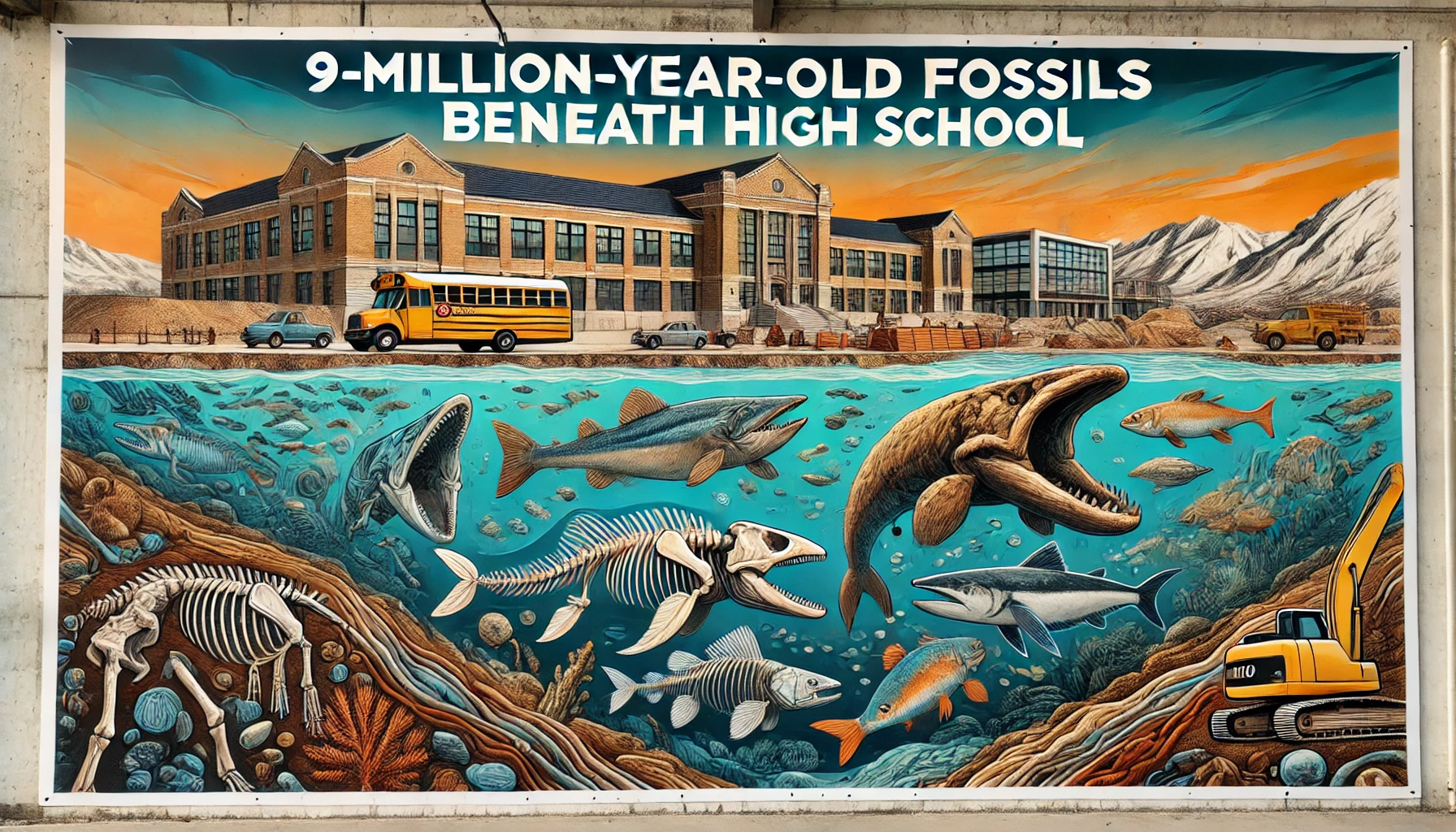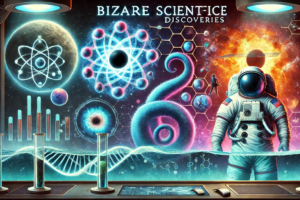Remarkable Fossil Bed Discoveries: The 9-Million-Year-Old Treasure Beneath a California High School
Imagine walking over ancient history for years, completely unaware of the treasure buried beneath your feet. That’s exactly what students at San Pedro High School in California were unknowingly doing for decades. During construction at the school, workers unearthed a remarkable fossil bed discovery that included marine fossils, prehistoric animals, and remains dating back nearly 9 million years. This extraordinary find has rewritten the geological history of California, offering fresh insights into the Miocene epoch and the ancient ecosystems that once flourished in the region.
In this blog, we’ll explore the significance of this discovery, from the ancient creatures that once roamed the seas to the geological processes that shaped modern California. We’ll also discuss the importance of these fossil discoveries for the scientific community and the broader public.
Marine Fossils: A Window into California’s Ancient Oceans
One of the most significant aspects of the discovery was the large number of marine fossils found at the site. These fossils are a testament to the fact that much of modern California was once submerged under water. The discovery included remains of extinct marine life, such as various species of fish and even ancient whale fossils. Some of these species, like the saber-tooth salmon, had never been discovered in the area before.
The presence of these marine fossils not only provides a glimpse into the prehistoric oceans that covered California, but also helps scientists understand the complex marine ecosystems that existed millions of years ago. These findings offer a detailed look at the types of marine creatures that lived during the Miocene epoch and the environmental conditions they faced.
Extinct Marine Life: Evidence of an Ancient Ecosystem
The diversity of extinct marine life uncovered at the site is staggering. Among the most fascinating finds were ancient whale fossils, including vertebrae from baleen whales, dolphins, and other sea creatures. These remains indicate that the area was once a thriving marine ecosystem, rich in biodiversity.
This discovery is particularly important because it provides rare fossil evidence of animals that were previously undocumented in the region. For example, the saber-tooth salmon is a prehistoric predator that existed millions of years ago. This species was larger than modern-day salmon and had distinctive, fang-like teeth. Finding this species in California helps paleontologists map its geographic range and better understand the types of fish that dominated ancient oceans.
The Role of Volcanic Activity in Preserving Fossils
An unexpected element of the discovery was the layer of volcanic activity fossils found at the site. These fossils, encased in phosphorous-rich rock, suggest that volcanic eruptions played a crucial role in preserving these remains. The volcanic activity created a protective environment where the fossils could remain undisturbed for millions of years.
Volcanic layers also provide valuable information about the environmental conditions that existed during the Miocene epoch. The presence of volcanic ash, for example, can help researchers date the fossils more accurately and understand how tectonic movements and volcanic eruptions shaped the region’s geology.
The Miocene Epoch: Uncovering a Forgotten World
The Miocene epoch, which spanned from about 23 million to 5.3 million years ago, was a period of significant change on Earth. During this time, the world’s climate was generally warmer, and the continents began to take their modern forms. For California, this epoch marked a time when the region was largely underwater, home to a wide variety of marine life.
Fossils from the Miocene epoch found beneath San Pedro High School offer a unique window into this forgotten world. The fossils suggest that the area once had a much different geography and environment than it does today. For example, the discovery of extinct marine life in what is now a dry, urban area highlights how drastically the landscape has changed over millions of years.
Volcanic Activity and Geological Transformations
The fossils also reveal that volcanic activity played a significant role in shaping the area’s environment during the Miocene epoch. Layers of volcanic rock found at the site suggest that eruptions may have buried and preserved the fossils for millions of years. This volcanic activity likely contributed to the formation of underwater canyons and islands, creating the ideal conditions for marine life to thrive.
The study of these volcanic activity fossils has given scientists a better understanding of how volcanic processes affected ancient ecosystems. For instance, researchers have theorized that heavy storms during the Miocene epoch could have washed debris, including plant material and animal remains, from nearby islands into underwater canyons, where they were later preserved by volcanic sediment.
Fossil Bed Discovery: Rewriting California’s Geological History
The fossil bed discovery beneath San Pedro High School is not just an exciting find for paleontologists—it is also reshaping our understanding of California’s geological history. The fossils found at the site include species that had never been documented in the area before, such as the saber-tooth salmon. This suggests that California’s prehistoric ecosystems were far more complex than previously thought.
The discovery is particularly significant because of the sheer number of fossils uncovered. Experts have described the site as one of the largest and most diverse fossil beds ever found in California, with remains of everything from fish and mammals to birds and plants. This diversity has provided researchers with a wealth of data to study, offering new insights into the state’s prehistoric past.
The Impact of Fossil Discoveries on Science and Education
The fossil discoveries at San Pedro High School have already had a major impact on both science and education. Many of the fossils have been sent to universities and museums, where they are being studied by experts. These studies are expected to yield new information about the region’s ancient environments and the species that once lived there.
Additionally, the discovery has provided an incredible learning opportunity for students. Some of the fossils have been put on display at the school, allowing students to see firsthand the remains of creatures that lived millions of years ago. This hands-on experience has sparked excitement and interest in paleontology and geology among the student body.
Prehistoric Animals: A Glimpse into the Past
Perhaps the most captivating aspect of the discovery is the variety of prehistoric animals that were unearthed. From small fish to large marine mammals, these fossils offer a glimpse into the diverse and vibrant ecosystems that existed during the Miocene epoch.
The remains of prehistoric animals found at the site include a wide range of species, some of which were previously unknown to scientists. For example, the saber-tooth salmon was an apex predator that likely played a key role in the marine food chain. Discoveries like these not only enhance our understanding of ancient life but also help scientists piece together the evolutionary history of modern species.
California Fossils: What They Reveal About the Region’s Past
The California fossils uncovered at the site are invaluable for understanding the state’s geological history. They reveal that the region was once home to a variety of ecosystems, including both marine and terrestrial environments. These fossils also highlight the impact of environmental changes, such as volcanic activity and shifting sea levels, on the development of California’s landscape.
By studying these California fossils, scientists can better understand how ancient species adapted to their changing environments. This knowledge is crucial for predicting how modern ecosystems might respond to current environmental challenges, such as climate change and habitat loss.
The Importance of Fossil Discoveries in Understanding Our World
The fossil bed discovery beneath San Pedro High School is a remarkable find that has far-reaching implications for both science and education. The marine fossils, prehistoric animals, and volcanic activity evidence uncovered at the site provide invaluable insights into California’s ancient ecosystems and the geological processes that shaped them. These fossil discoveries are rewriting the history of the region and offering new clues about the world as it existed millions of years ago.
For more information on the study of fossils and geological history, visit Regent Studies. These discoveries not only enhance our understanding of the past but also inspire future generations to explore the natural world and the mysteries it holds. As we continue to unearth new findings, the lessons we learn from the distant past will undoubtedly shape our understanding of the present and future.
For additional reading on this topic, check out resources from credible sources like the Smithsonian National Museum of Natural History for more on paleontology and fossil studies.





